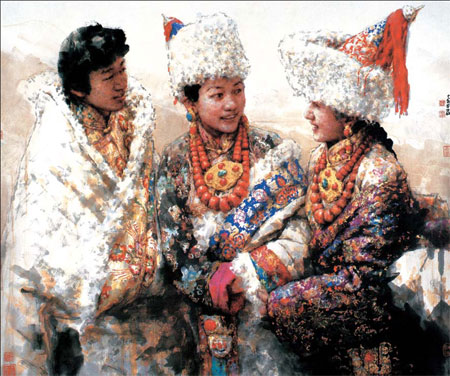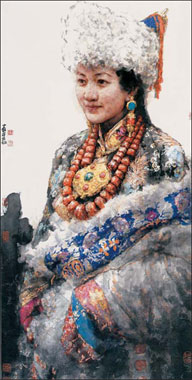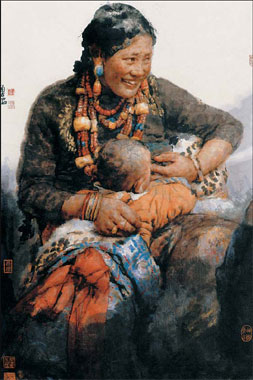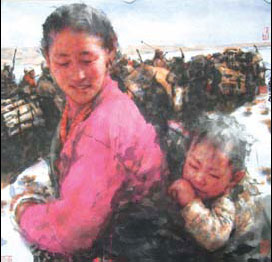Fine form
|
Waves of benefits Paintings by Nan Haiyan |
Nan Haiyan, born in Pingyuan county, Shandong province in 1962, is a top Chinese painter specializing in depicting the human figure.
As well as working for the Beijing Art Academy, Nan is a member of the China Artists Association and a visiting professor of China Central Academy of Fine Arts.
The Beijing Art Academy, established in May 1957 with the support of former Premier Zhou Enlai, was China's first, and until recent times the largest, professional art academy.
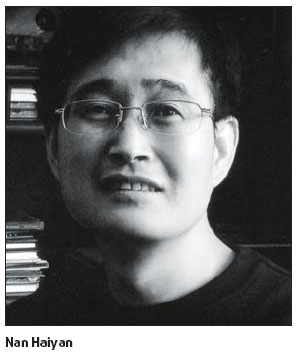
Nan joined the Wang Mingming Workshop of Beijing Art Academy in 1994 and received instruction from such well-known artists as Lu Chen, Zhou Sicong and Yao Youduo.
Nan's art pieces have won a series of awards both domestically and overseas. At the age of only 27, he received the Most Promising Award at a contest jointly held by the Chinese mainland, Taiwan and Hong Kong.
Due to his distinctive and compelling work, Nan has been frequently invited to participate in noted exhibitions and events. He has also presented personal exhibitions on both the mainland and in Taiwan.
To gain inspiration from local life and people, he frequently travels to and lives in west China, often in Tibet.
His drawings of human figures are perhaps his strongest suit. While traditional Chinese painting still has an important place in the life of modern Chinese, many painters now express these new times in new ways.
By combining modern expression with traditional Chinese painting techniques, they are opening up an unexplored artistic world of artistic expression. Nan is clearly one of them.
His art style is also generally seen by art critics as from the "realism school", but Nan says he does not define it as realism or modernism.
|
Fascination of west wind |
"I am painting in the pursuit of expressing my mind and heart," he says.
Whether Chinese painting is realistic is subject of frequent debate. Some feel that it is not realistic, but that answer tells only part of the story.
Reaching its climax in the Tang (AD 618-907) and Song dynasties (AD 960-1279), realism in Chinese painting is not an objective reflection of the existence of an object as perceived through the sense of sight, but rather an expression of a subjective type of recognition or insight.
Business phenomenon
Commenting on the news that many Chinese oil paintings were auctioned at incredibly high prices, Nan has its own thoughts. "It's only a business phenomenon, that's all," he says.
Nan notes many Chinese oil painters borrow Western painting skills and neglect the soul behind the technique.
"Chinese oil painting should have its own language and thoughts as well," Nan says. "It's my heart and emotion that inspired my brush, and so I am my only enemy."
Oil painting, an apogee of Western art, was introduced to China a century ago. Current Chinese oil painting is a mix of Chinese and Western cultures.
Chinese oil painting has aroused worldwide attention as it not only bears the heritage of generations but also has developed into a distinctive art form with characteristics of the Chinese nation.
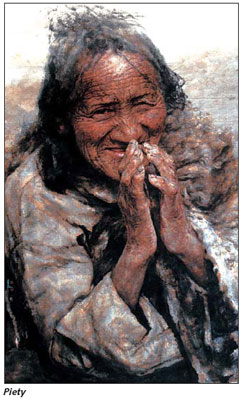
|
Maternal love |
|
Good fortune |
|
Golden valley |
(China Daily 12/17/2008 page10)


